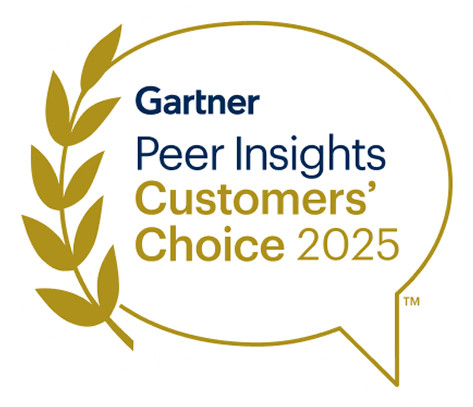Automating Sensitive Data Classification in Audio, Image and Video Files
The world we live in is constantly changing. Innovation and technology are advancing at an unprecedented pace. So much innovation and high tech. Yet, in the midst of all this progress, vast amounts of critical data continue to be stored in various formats, often scattered across network file shares network file shares or cloud storage. Not just structured documents—PDFs, text files, or PowerPoint presentations - we're talking about audio recordings, video files, x-ray images, engineering charts, and so much more.
How do you truly understand the content hidden within these formats?
After all, many of these files could contain your organization’s crown jewels—sensitive data, intellectual property, and proprietary information—that must be carefully protected.
Importance of Extracting and Understanding Unstructured Data
Extracting and analyzing data from audio, image and video files is crucial in a data-driven world. Media files often contain valuable and sensitive information that, when processed effectively, can be leveraged for various applications.
- Accessibility: Transcribing audio into text helps make content accessible to people with hearing impairments and improves usability across different languages and regions, ensuring compliance with accessibility regulations.
- Searchability: Text extraction enables indexing of media content, making it easier to search and categorize based on keywords or topics. This becomes critical when managing sensitive data, ensuring that privacy and security standards are maintained while improving data discoverability.
- Insights and Analytics: Understanding the content of audio, video, or images can help derive actionable insights for fields like marketing, security, and education. This includes identifying sensitive data that may require protection, ensuring compliance with privacy regulations, and protecting against unauthorized access.
- Automation: Automated analysis of multimedia content supports workflows like content moderation, fraud detection, and automated video tagging. This helps prevent exposure of sensitive data and strengthens security measures by identifying potential risks or breaches in real-time.
- Compliance and Legal Reasons: Accurate transcription and content analysis are essential for meeting regulatory requirements and conducting audits, particularly when dealing with sensitive or personally identifiable information (PII). Proper extraction and understanding of media data help ensure that organizations comply with privacy laws such as GDPR or HIPAA, safeguarding against data breaches and potential legal issues.
Effective extraction and analysis of media files unlocks valuable insights while also playing a critical role in maintaining robust data security and ensuring compliance with evolving regulations.
Cases Where Sensitive Data Can Be Found in Audio & MP4 Files
In industries such as retail and consumer services, call centers frequently record customer calls for quality assurance purposes. These recordings often contain sensitive information like personally identifiable information (PII) and payment card data (PCI), which need to be safeguarded. In the media sector, intellectual property often consists of unpublished or licensed videos, such as films and TV shows, which are copyrighted and require protection with rights management technology. However, it's common for employees or apps to extract snippets or screenshots from these videos and store them on personal drives or in unsecured environments, exposing valuable content to unauthorized access.
Another example is when intellectual property or trade secrets are inadvertently shared through unsecured audio or video files, putting sensitive business information at risk - or simply a leakage of confidential information such as non-public sales figures for a publicly traded company. Serious damage can occur to a public company if a bad actor got a hold of an internal audio or video call recording in advance where forecasts or other non-public sales figures are discussed. This would likely be a material disclosure requiring regulatory reporting (ie., for SEC 4-day material breach compliance).
Discover Sensitive Data in MP4s and Audio with Sentra
AI-powered technologies that extract text from images, audio, and video are built on advanced machine learning models like Optical Character Recognition (OCR) and Automatic Speech Recognition (ASR).
OCR converts visual text in images or videos into editable, searchable formats, while ASR transcribes spoken language from audio and video into text. These systems are fueled by deep learning algorithms trained on vast datasets, enabling them to recognize diverse fonts, handwriting, languages, accents, and even complex layouts. At scale, cloud computing enables the deployment of these AI models by leveraging powerful GPUs and scalable infrastructure to handle high volumes of data efficiently.
The Sentra Cloud-Native Platform integrates tools like serverless computing, distributed processing, and API-driven architectures, allowing it to access these advanced capabilities that run ML models on-demand. This seamless scaling capability ensures fast, accurate text extraction across the global user base.
Sentra is rapidly adopting advancements in AI-driven text extraction. A few examples of recent advancements are Optical Character Recognition (OCR) that works seamlessly on dynamic video streams and robust Automatic Speech Recognition (ASR) models capable of transcribing multilingual and domain-specific content with high accuracy. Additionally, innovations in pre-trained transformer models, like Vision-Language and Speech-Language models, enable context-aware extractions, such as identifying key information from complex layouts or detecting sentiment in spoken text. These breakthroughs are pushing the boundaries of accessibility and automation across industries, and enable data security and privacy teams to achieve what was previously thought impossible.


Sentra: An Innovator in Sensitive Data Discovery within Video & Audio
Sentra’s innovative approach to sensitive data discovery goes beyond traditional text-based formats, leveraging advanced ML and AI algorithms to extract and classify data from audio, video, and images. Extracting and understanding unstructured data from media files is increasingly critical in today’s data-driven world. These files often contain valuable and sensitive information that, when properly processed, can unlock powerful insights and drive better decision-making across industries. Sentra’s solution contextualizes multimedia content to highlight what matters most for your unique needs, delivering instant answers with a single click—capabilities we believe set us apart as the only DSPM solution offering this level of functionality.
As threats continue to evolve across multiple vectors, including text, audio, and video—solution providers must constantly adopt new techniques for accurate classification and detection. AI plays a critical role in enhancing these capabilities, offering powerful tools to improve precision and scalability. Sentra is committed to driving innovation by leveraging these advanced technologies to keep data secure.
Want to see it in action? Request a demo today and discover how Sentra can help you protect sensitive data wherever it resides, even in image and audio formats.
<blogcta-big>











.webp)

.webp)

